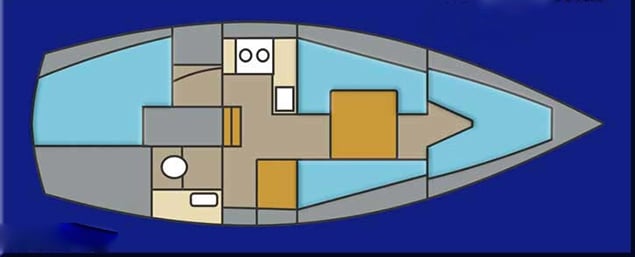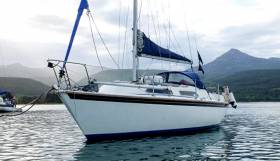Displaying items by tag: Westerly Merlin
Westerly Merlin For Sale Offers Double Value As Either Starter Cruiser Or Down–Sizer
In these hectic times, with volatility a fact of life, the new buzzword is “manageability” writes W M Nixon. It may not provide slogans which set the world on fire. You won’t see people marching in their droves along O’Connell Street with “Manageability Now!!” screaming from their placards. But it rings a bell with many of us.
For life’s not so bad when you live in a house of manageable size and drive around in an economical car which may not be the height of luxury, but it doesn’t break the bank. And if sailing and cruising is your thing, you hope to do so in a boat which is of sufficient size to provide proper standing headroom, a worthwhile galley, a civilized number of bunks, and a decent-sized accessible toilet, but nevertheless is of an overall length which won’t attract exorbitant marina and mooring fees. If you can do that with a boat which manages the complete package by also having a decent performance potential, then it’s a reasonable deal, and the Westerly Merlin 27 provides it.
We’ve commented in this column before on the very useful, robust and no-nonsense boats which resulted from the team-up between volume boatbuilder Westerly Marine and up-and-coming designer Ed Dubois, who at the time was making his mark as a designer of successful offshore racers, but later was very much associated with the top end of the market, veering into superyachts.
 With every bunk filled, you could sleep six, but 3 to 4 would provide for civilised cruising, and she could be comfortably sailed by two.
With every bunk filled, you could sleep six, but 3 to 4 would provide for civilised cruising, and she could be comfortably sailed by two.
Thus this 27ft–Westerly Merlin of 1985 vintage is a fascinating snapshot of a certain stage in the career of both designer and builder. But for those who are more interested in the boats themselves rather than a highfalutin analysis of some bigger picture, the news is that the Westerly Merlin provides a perfect example of double potential. She would be ideal for someone taking their first tentative steps in proper cruising. But equally she might be the very answer for an experienced cruising enthusiast who wants to continue cruising, but finds that his or her present boat is too big for their current needs.
She’s simple and sensible. A fractional rig takes the heavy weight out of controlling the genoa. And a straightforward transom-hung rudder keeps everything visible and accessible in the steering department, while maximizing the amount of space available within the hull for other purposes.
There’s a sense of balance about the overall concept. The cockpit is big enough without being excessively roomy, there really is a proper galley with a grown-up cooker, and the conveniently-located toilet has ample space.
The owner – a leading member of the Cruising Association of Ireland – like a good sailing performance, so to minimize drag he has fitted a Kiwi prop to transmit the power from a more-than-adequate 25HP Beta diesel which was newly-installed just eight years ago. The boat has been well cruised on both sides of the Irish Sea and along our southern and southwestern seaboards, as well as deep into Scotland, and she’s keen to go again. On view in Greystones, in good order, and sensibly priced at €20,750. Read the full listing here.





























































